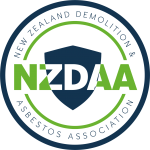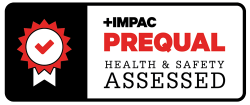In a post pandemic recovering world, focus have shifted to unseen or seemingly invisible contaminants in the air which can cause ill health to the human race.
It is evident that the quality of air that we breathe is crucial in our well-being and quality of life.
During COVID, for the most part, it would seem that the world has collectively adopted habitual rituals in an attempt to protect ourselves (hand sanitising, dining outdoors where there is ample “fresh” airflow, mask wearing and fit testing etc.). Emphasise was placed on trying to control spread of the virus by multiple means, with Indoor Air Quality seemingly being the lowest priority.
Now isn’t it about time we started focussing more on improving the quality of air that we take into our lungs?
A snapshot of the state of housing in New Zealand published in a report called Housing in Aotearoa: 2020, by Stats NZ and the Building Research Association of New Zealand (Branz) showed that about 28,000 homes in New Zealand were reported to be always damp and always have visible mould. About 11,400 of those homes were in Auckland.
The United States EPA’s (Environmental Protection Agency) Total Exposure Assessment Methodology (TEAM) studies found that about a dozen common organic pollutants are likely to be 2 to 5 times higher inside homes than outside, regardless of whether the homes were located in rural or highly industrial areas.
The world is moving towards and focusing on improved environmental conditions and lowering emissions, which includes focusing on energy efficient homes and the conservation of energy. Unfortunately, this focus has led to more airtight building constructions and lower focus and implementation of effective ventilation systems.
What are the hazards that can be found in indoor air?
- Mould
- VOCs
- Particulate Matter
- Carbon Dioxide Build up
- Poor temperature and humidity
- Bio aerosols (Including viruses such as COVID)
- Hazardous Chemical build up.
People spend more and more time indoors in the modern world. People working indoors often experience symptoms such as headaches, shortness of breath, coughing or nausea just to mention a few. Building occupants are simultaneously exposed to a wide range of indoor air contaminants.
So, when is indoor air clean enough?
When the risks are anticipated thoughtfully, recognized, quantified and evaluated, controlled successfully and communicated effectively.
- Anticipate the risk
- Engage a ventilation engineer during a building design and commissioning phase
- Install appropriate HVAC systems to heat, ventilate and condition the indoor air
- Evaluate and monitor the conditions
- Get to the root of the issue or contaminant source if anything is identified and control it at the source – eliminate if possible
- Frequent air quality monitoring by a suitably qualified person can identify and quantify any contaminants and recommend appropriate control measures to mitigate the risk
- Design a strategy / plan to target the issues
- Implement effective controls
- Air filtration and cleaning systems can target potential hazards and minimise them
- Ventilation improvements may be required, which may include higher air exchange rates
- Take care not to introduce additional hazards and risks while trying to control the current hazard
- Communicate the hazard and actions to control to relevant stakeholders
- Check the controls regularly
- Regular HVAC and filter cleaning and audit / check schedules are crucial to maintain healthy indoor air quality.




